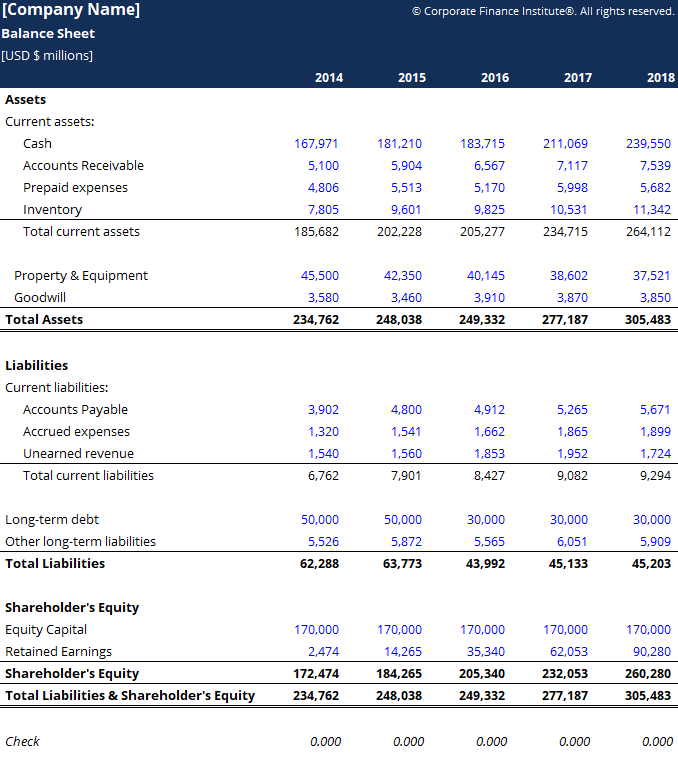Statement of Financial Position Balance Sheet: Definition, Formula, Template, Example

If the company takes $10,000 from its investors, its assets and stockholders’ equity will also increase by that amount. While stakeholders and investors may use a balance sheet to predict future performance, past performance does not guarantee future results. He doesn’t have a lot of liabilities compared to his assets, and all of them are short-term liabilities. Annie’s Pottery Palace, a large pottery studio, holds a lot of its current assets in the form of equipment—wheels and kilns for making pottery.
Balance sheet ratios for improved analysis
Amounts due from related parties are required to be present in the balance sheet and need to be disclosed properly in the note to financial statements. On a more granular level, the fundamentals of financial accounting can shed light on the performance of individual departments, teams, and projects. Whether you’re looking to understand your company’s balance sheet or create one yourself, the information you’ll glean from doing so can help you make better business decisions in the long run. Below liabilities on the balance sheet is equity, or the amount owed to the owners of the company. Since they own the company, this amount is intuitively based on the accounting equation—whatever assets are left over after the liabilities have been accounted for must be owned by the owners, by equity. These are listed at the bottom of the balance sheet because the owners are paid back after all liabilities have been paid.
Hiring an Accountant: Before and After
The balance of equity is affected by an income statement as well as assets and liabilities. Publicly held companies are required to file quarterly reports with the Securities and Exchange Commission. You can access these reports payroll accounting basics through a company’s investor relations section on its website, or via the SEC EDGAR database. You can also listen to the company’s quarterly earnings calls to hear company executives’ views of current business conditions.
Add Total Liabilities to Total Shareholders’ Equity and Compare to Assets
- These ratios can yield insights into the operational efficiency of the company.
- It’s a snapshot of a company’s financial position, as broken down into assets, liabilities, and equity.
- By comparing your business’s current assets to its current liabilities, you’ll get a clearer picture of the liquidity of your company.
- If you were to add up all of the resources a business owns (the assets) and subtract all of the claims from third parties (the liabilities), the residual leftover is the owners’ equity.
This is an important document for potential investors and loan providers. Investors, creditors, and internal management use the balance sheet to evaluate how the company is growing, financing its operations, and distributing to its owners. It will also show the if the company is funding its operations with profits or debt. To complete your balance sheet template you’ll need to add in details about the debts and liabilities your company owes. Whatever a business owns — its assets — have been financed by either taking on debt (liabilities), or through investments from the owner or shareholders (equity). Additional paid-in capital or capital surplus represents the amount shareholders have invested in excess of the common or preferred stock accounts, which are based on par value rather than market price.
How are the Financial Statements Linked?
It is typically presented in a comparative format, such as for example, as of 31 December 20X1 and 31 December 20X0. When most of us think of the stock market, we think of common shares that are actively traded on exchanges. But there’s another type—preferred stock—that acts more like a bond. For example, if you buy a car for $40,000 and expect it to last for five years, you might depreciate it at $8,000 per year. After the first year, your car would be shown on the balance sheet at the purchase price of $40,000 minus $8,000 accumulated depreciation, for a net book value of $32,000.

In other words, it is the amount that can be handed over to shareholders after the debts have been paid and the assets have been liquidated. Equity is one of the most common ways to represent the net value of the company. Part of shareholder’s equity is retained earnings, which is a fixed percentage of the shareholder’s equity that has to be paid as dividends. With this information, stakeholders can also understand the company’s prospects.
Balance sheets provide the basis for computing rates of return for investors and evaluating a company’s capital structure. A balance sheet is meant to depict the total assets, liabilities, and shareholders’ equity of a company on a specific date, typically referred to as the reporting date. Often, the reporting date will be the final day of the accounting period. A balance sheet is one of the most essential tools in your arsenal of financial reports. Generally speaking, balance sheets are instrumental in determining the overall financial position of the business. The balance sheet (also known as the statement of financial position) is a financial statement that shows the assets, liabilities, and owner’s equity of a business at a particular date.
Shareholder equity is not directly related to a company’s market capitalization. The latter is based on the current price of a stock, while paid-in capital is the sum of the equity that has been purchased at any price. These two balance sheets are distinct, but the operating balance sheet is based on data from the accounting balance sheet. So, while they can’t explain commercial trends, you can compare balance sheets to measure growth over time.

